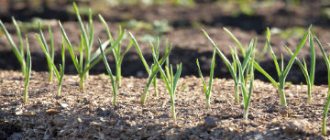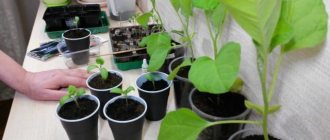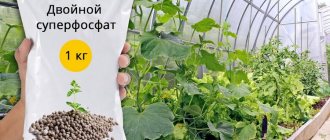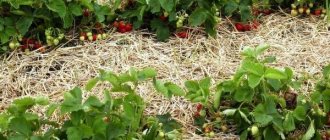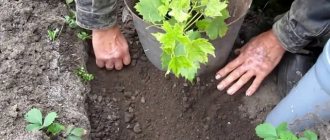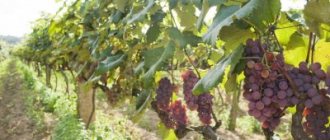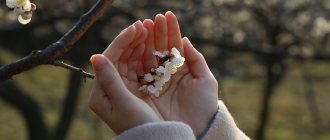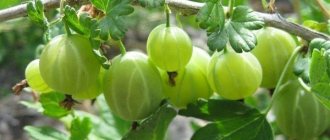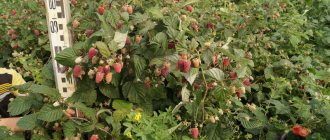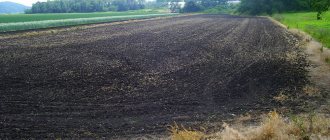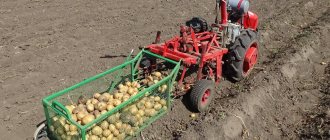Category: Organic fertilizers Reading time: 10 min · Views: 914
Mulching is an agrotechnical technique that allows you to get a rich harvest. New gardeners may not know what mulch is. This term refers to a mixture of certain substances intended to protect the plant. To perform mulching correctly, you need to know its nuances.
Types of mulching
Experienced gardeners use a mixture of organic and inorganic components. Compost is used to create a protective layer. This product is classified as “organic”. Compost saturates plants with nutrients, it glues the soil together, but prevents the formation of a hard crust.
The following is used as mulch:
- sawdust;
- seed husks;
- nut shells.
Organic matter is used to improve soil properties. Mulching requires compliance with important rules. Before using sawdust or bark, you need to treat the soil with manure (an alternative is urea). Thanks to this procedure, the lack of nitrogen will be compensated.
Application of sawdust
This material protects plants from pests. The main advantage of sawdust is its versatility. They are suitable for any soil. Sawdust allows air to pass through, thereby preventing fungal diseases.
If there are microorganisms on the surface of such mulch, they will subsequently decompose and turn into humus. Sawdust is used for mulching tomatoes and potatoes. Vegetable crops need shelter, especially if the summer is hot. Mulching with sawdust must be done correctly; it must not be allowed to lie stale.
Types of mulch that should only be applied in the fall
Some soil mulching materials are high in carbon. Such material, when covered with soil, decomposes and combines with nitrogen in the soil. Microorganisms, under the influence of carbon and nitrogen, multiply intensively and begin to use nitrogen for nutrition in large quantities.
Loss of nitrogen leads to weakened growth and development of plants. It is known that microflora dies in the autumn, and that nitrogen substances accumulate during this period, so materials with a high carbon content should be applied only in the fall.
Organic materials suitable for the autumn mulching procedure:
- sawdust;
- tree bark;
- pine litter;
- straw;
- peat.
In the table we consider organic materials and their carbon and nitrogen content:
| Organic material | Amount of carbon and nitrogen content |
| Freshly cut grass | 19:1 |
| Sawdust | 450:1 |
| Coniferous litter | 80:1 |
| tree bark | 700:1 |
| Dry leaves | 50:1 |
| Weeds | 30:1 |
| Hay | 15:1 |
| Straw | 80:1 |
| Peat | 90:1 |
Organic materials with a high nitrogen content are suitable for mulching in the autumn, while those with a low nitrogen content are suitable for mulching in the spring and summer.
Using straw and hay
Straw is needed to repel slugs. It is recommended to mulch to a depth of 15 cm. Straw is placed between the rows. The material is suitable for mulching trees. To create a protective layer, hay and green fertilizer are used. Even weeds can be useful. Hay is used to protect trees. The root collar of tree crops must be dry. If harmful microflora appears on the surface of the layer, it will not penetrate into the deep structures.
Plant protection with peat
This material improves the properties of the soil. Peat retains the valuable substances that the plant received. It repels insects and prevents diseases associated with exposure to pathogenic microflora. The advantage of peat is that it does not need to be removed. The gardener saves effort because over time the peat becomes soil.
Natural fertilizer promotes the growth of garden crops. Raspberries need it. A berry plant requires a lot of water, peat, in turn, retains moisture. You can mulch tomato seedlings that have reached the age of 1.5 months.
Green manure and mowed grass
Green fertilizers (green manure) are used as mulch. The cut grass is laid out in the sun, it dries out, losing a significant amount of moisture. Decomposition occurs slowly. To obtain high-quality organic fertilizer, you need to leave the grass in natural conditions.
In winter and autumn it will rot, as a result the gardener will receive organic matter. Green manure can be used in mid-spring. Mustard is a popular green fertilizer. Mulching with this plant promotes the growth of cucumbers, zucchini and other heat-loving crops. Green manure is used to protect cabbage, which produces a late harvest. It is important to consider the nuances:
- A scarecrow is placed next to the seedlings.
- Green manure is mowed until flowering. The stems should be quite rigid.
Green manure is used for various purposes. Auxiliary crops improve soil properties and provide disease prevention.
Types of organic and mineral mulch: features, advantages and disadvantages
Rotted material is used as organic mulch, and fresh material is used as mineral mulch. Let's look at the features of organic types of mulch:
Cut grass is the most affordable material for mulching. Mown lawn or meadow grass is used for mulch only in a wilted state. Using dead grass reduces snail migration. A top layer of mulch dries out and discourages slug formation, which requires a damp, damp surface. In this regard, plants in mulched beds with mowed grass are less likely to be affected by slugs in rare cases.
Sawdust. The soil is mulched mainly with sawdust, which was obtained after processing deciduous trees. Before adding sawdust, it must be dried and weathered. It is best to add sawdust with mowed grass.
Straw and hay are the best types of mulch for vegetable crops. Both materials retain the optimal amount of moisture and heat in the soil. During decomposition, they feed the culture with the necessary substances.
Leaf litter improves soil structure. Mulch the soil mainly with leaf humus. Retains moisture and helps plants survive summer drought. Increases soil fertility, as it is a favorable habitat for earthworms.
Leaf litter is used together with peat and compost.
Coniferous litter improves soil structure and is used as a loosening material. Prevents the formation of a dense cortical layer. Use with rotted manure or compost.
Tree bark – replenishes nutrient deficiencies and neutralizes acidity in the soil. Retains moisture in the soil and protects the plant from hypothermia. The main advantage is that it filters water and prevents harmful substances from penetrating to the roots.
Inorganic materials for soil cover
How to mulch the soil? For these purposes, they often use:
- textile;
- film;
- paper or cardboard.
Inorganic products also include stones. They can be small or large. Expanded clay is suitable for creating a protective layer. The material has decorative qualities. It allows you to create a unique landscape composition. Expanded clay can be removed at any time and the land can be processed. The structure of the stone is weak, which means that it can disintegrate into small particles.
If you don’t want to prepare mulch, you can use black film. It retains moisture and suppresses weed growth. Film is a universal material, but it has a significant drawback: it burns over the summer. The material is usually used once per season. It is necessary to take care of watering. Water is added dropwise or holes are made directly in the film. Pests can accumulate under this covering material. Periodically, the film must be removed and the soil treated with preparations. Slugs are collected by hand. If you put hay on film, you can use it for several seasons.
Textiles are also suitable for mulching beds. The basis of the material should be polypropylene fiber. It absorbs the sun's rays and also prevents the growth of weeds.
Which garden and vegetable plants require special mulching?
Everything is simple here - all plants that require abundant watering:
- Cabbage of all kinds.
- Bulgarian (sweet) pepper.
- Cucumbers, zucchini (they need frequent watering during the fruiting period).
- Eggplant.
- Strawberry wild-strawberry. Mulching with straw and sawdust is necessary not only to retain moisture and reduce the intensity of watering, but also to ensure that the berries remain clean and do not come into direct contact with the ground (this is important if you grow strawberries for sale). It is also important for preventing diseases.
- Greens - parsley, celery, sorrel. Radish.
- Raspberries.
Of course, you can mulch other crops as well. For example, mulching can be successfully used when growing potatoes or for various garden trees and shrubs. The list simply shows garden and vegetable crops that require mulching first.
Making mulch from bark and wood chips
Bark and wood chips are in high demand, but before mulching, you need to know the nuances of these materials. The bark contains tannins, which slow down the growth of crops. The bark makes the soil more acidic; coniferous crops take root in such soil.
Spruce and cypress respond well to compost. The bark has many benefits. It is easy to use and allows oxygen to pass through. Natural material contains phytoncides. These components purify the air and drive away pests. Bark mulch looks beautiful. Wood chips are also not without their advantages. It increases the fertility of the soil and makes it looser. Natural material retains moisture and prevents fungal diseases.
Using leaf humus
Fallen leaves are valuable organic matter. It mainly improves the soil composition. Leaves of healthy trees are used as mulch. Plants should not be infected, otherwise the infection will spread throughout the entire garden bed. If a summer resident assumes that the tree from which the leaves have fallen is unhealthy, it is necessary to combine it with compost.
The leaves are treated with antifungal compounds and placed directly into the compost. Leaf humus has a slightly acidic reaction. It is not a fertilizer in itself, however, it ensures air permeability of the soil. Not only rotted leaves, but also dry leaves are used as mulch.
Newspapers, cardboard, kraft paper
The most accessible and inexpensive materials. Weeds do not penetrate through such a coating, and moisture is well retained under it. However, they are not durable; newspapers and cardboard last one season; kraft paper can last two years. With this type of mulching, it is not very convenient to water and feed the plants. Sometimes shredded cardboard or paper is used to cover the soil rather than sheets.
Photo: Shutterstock.com
Needles are a special natural material
It is intended for flowers. To enhance the beneficial properties of pine needles, you need to add a small amount of bark and dry branches. Thanks to the needles, the soil is saturated with moisture, and the plant, in turn, breathes well.
It is important to remember that this material acidifies the soil. Care must be taken when using. It is necessary to know what kind of soil a particular crop prefers. The needles protect strawberries from pests. Due to its acidifying properties, there is no need to use ash. You can mulch strawberries using clean straw, so the berries will not come into contact with the soil.
Chemical composition of straw
The composition of organic fertilizer depends on what the straw is obtained from.
It consists of dried stems and dry remains of legumes and grain crops that remain after threshing. Chemical composition of straw:
- organic fiber;
- vegetable proteins;
- extractive nitrogen-free substances - lignin, hemicellulose, starch, sucrose;
- fats;
- ash.
Straw contains a large number of micro- and macroelements - sodium, magnesium, phosphorus, sulfur, calcium, chlorine, manganese, zinc, cobalt. It also contains a complex of nonessential and essential amino acids, which include tryptophan, lysine, and cystine.
In terms of the amount of active organic substances, straw raw materials are 2-3 times higher than cow manure, which has ensured the popularity of using straw in the garden.
Important nuances
Mulching gives good results if the soil is warm enough. The protective layer should not be very dense. The main thing is that it allows air to pass through. You cannot create an artificial blanket over cold ground, otherwise the garden crop will lag behind in development. Mulching is carried out in the spring. At this time the earth is warmed up. The procedure is also carried out before the onset of cold weather.
Before creating a protective layer, you need to clear the area of weeds. It is recommended to add ash, bone meal, or other fertilizers that decompose slowly. The layer is changed periodically. It is important to consider the characteristics and parameters of materials used for plant protection. If mulching has been done, water should be added more often. The mulch layer for vegetables and flowers should be 10 cm.
Mulching strawberries
The mini-shrub is mulched 2 times a year. The first procedure is carried out in the spring, when the strawberries form ovaries. The flower stalks of the plant should not come into contact with the ground. The protective layer is removed in August. The second procedure is carried out in November. It protects strawberries from the cold. Let's consider the first method. It is necessary to shake off the hay, dry it in the sun, and clear the area where the strawberries grow from weeds. Instead of hay, you can use bark or sawdust. The optimal layer thickness is 10 cm.
Black covering material is often used to protect the berries. It speeds up the ripening process and prevents weed growth. Instead of polyethylene film, spunbond can be used. The material lasts 4 - 5 years. Spunbond has a disadvantage. It does not allow air to pass through well, and the strawberry roots may rot. An alternative is roofing felt. The material is organic and therefore harmless. Ruberoid does not contain toxins.
If strawberries grow over a large area, it is recommended to lay several layers of roofing material and press down the edges. Water is added as needed. During drought, the plant is watered more often, but the material is not removed.
How to properly mulch the soil where strawberries grow? The second method involves the use of roofing felt. It is necessary to dig up the soil, remove all the weeds and add useful compounds. Make small furrows around the perimeter of the area; the edges of the material used will be lowered into them. The spunbond or roofing felt is carefully stretched, the edges are placed in the formed holes and then fixed. The seedlings are placed in pre-formed holes, then water is added.
Mulching with textiles and film
This type of protective procedures is used in two cases:
- The first is the construction of “dry blankets” for the winter for various ornamental plants and vines, which has already been described above.
- The second type of use is to protect beds from weeds and moisture evaporation.
A mandatory condition when using rolled covering materials is compliance with all preparatory procedures (weeding, moistening, loosening) before covering the beds with polyethylene. When using this method in the summer, only transparent film and agrotextiles are used. But the black film is used before planting begins. It has too strong a depressing effect on any plant flora, so even with partial perforation it is not suitable for summer use.
mulching with agrotextiles (left) and film (right)
The film is spread on the beds at the end of March, when it is already warm enough and weeds begin to grow. Within 3-4 weeks, they all die under a black film, and their roots, which die naturally, can be easily removed with a rake.
Agrotextiles are very often used for mulching strawberries. Usually they take non-woven tightly, which allows moisture to pass through. It is spread over all surfaces of the bed, cutting out circles at equal distances for berry bushes. When using this method, strawberries bear fruit well throughout the season and require virtually no additional care.
Covering material for raspberries
Manure is used to mulch raspberries. The fertilizer has a rich composition, i.e. it is aggressive. To avoid burns, stems and leaves should not come into contact with it. Manure improves the composition of the soil, thus promoting the active growth of raspberries. Organic matter is added in the spring, after fertilizing with mineral compounds. It is not recommended to lay a thick layer, otherwise the soil will not warm up well. Most often, manure is used in early summer. Lay a ten-centimeter layer.
In the fall, you can apply a bulk composition. An alternative option is compost. If the latter was chosen as mulch, the layer thickness should be 5 cm. Mulching with peat and sawdust is also practiced. Raspberries are covered for the winter. To protect the plant from the cold, you can use straw mixed with compost. Peat protects the crop from the effects of cold winds; in summer it allows air to pass through. Sawdust is used in the spring, after adding mineral compounds.
Raspberries thrive in acidic soil. Sawdust sprinkled with ash infusion is also used as mulch. To prepare the infusion, you need to take 1.5 kg of ash and dilute it in 1 liter of water. Thanks to this technique, you will reduce the acidity of the soil, the plant will receive nutrients. Raspberries are mulched with straw and hay. Natural materials protect against frost. If possible, use straw instead of hay. You can combine it with mullein or peat. This mixture will improve the soil structure. The optimal thickness of the mulch layer is 10 cm.
Effect on soil and plants
Benefits for the soil
As straw decomposes in the soil, it breaks down into proteins and carbohydrates. The activity of microorganisms increases, which leads to the following positive results :
- the soil is loosened, its structure improves;
- the process of air enrichment and water permeability improves;
- the soil is saturated with carbon;
- enriched with microelements and nutrients;
- The drying process occurs faster after the snow melts.
By fertilizing thin soil with different types of straw at the same time, you can achieve its complete restoration.
Negative phenomena include :
- soil enrichment occurs by accumulating substances over 2-4 years;
- soil moisture is required when there is a lack of natural moisture.
If you use straw in the garden every fall as a fertilizer immediately after harvesting, then the negative effects can be significantly reduced.
Pros and cons for plants
Positive factors:
- favorable conditions for the formation of organic matter and plant growth;
- mulch blocks weed growth.
Negative factors:
- during decomposition, acids are formed that can negatively affect the root system;
- larvae remaining after treatment can slow down the development of planted plants.
Caring for tree crops
It is important to know the features of mulching such plants.
- To protect the tree from the glare of the sun, you need to use sawdust. In addition to their basic functions, they have reflective properties. Sawdust does not allow the evaporation of moisture, which is so necessary for the tree.
- Nettles are used to saturate the soil with nutrients. The grass replenishes the lack of nitrogen, it disinfects the air and accelerates the growth of the young tree. Grass clippings are also used as mulch.
- The bark is not without its shortcomings. Insects can live under it and disrupt the plant's photosynthesis.
- To get rid of weeds, you need to use artificial material. Roofing felt is in demand.
- Moss retains water and helps retain heat. It is ideal for trees with columnar crowns.
Features of mulching flowers
The procedure is carried out in the spring after loosening. For these purposes, sawdust, paper, and special covering material are used. The advantage of mulch for flowers is that it makes the soil lighter. If flowers need regular moistening, peat can be used as a covering material. Spunbond is also useful. It protects crops from weeds.
To increase the decorative value of flowering plants, you need to use crushed stone and gravel. Organics have a lot of positive reviews. It quickly decomposes and turns into humus, thereby giving the plant more useful substances. Inorganic covering materials are also in demand.
If the plant shows signs of disease, the procedure must be carried out as carefully as possible. It is recommended to remove affected plants or parts thereof. Do not over-moisten the soil, otherwise gray rot will occur. Peonies and lilies need to be mulched with a thin layer. If clematis grows in a flowerbed, it is necessary to cover it with the help of social material. The culture does not take root in overheated soil conditions. The thickness of the layer for flowers should be 3 cm, for shrubs and trees - from 10 to 15 cm.
Main mistakes
Straw is more suitable for mulching sandy soil. When clay soil is covered with a thick layer, its lower part begins to rot. On such soils, it is recommended to use cut stalks of cereals, lay them no more than 2 cm thick (add once every 14 days).
Mulching a strawberry bed (Photo used under standard license ©azbukaogorodnika.ru)
Other common mistakes:
- The material is best used for mulching open plantings. In a greenhouse, the use of organic matter does not always give positive results. This is due to the microclimate of the greenhouse - high humidity, heat and insufficient air circulation. In such conditions, the mulch decays, fungi grow in it, and plants become infected with pathogenic microorganisms. In unheated greenhouses, straw is placed on heated soil after frost.
- When mulching, gardeners sometimes neglect nitrogen fertilizers. Coating the surface with organic matter is carried out in combination with such fertilizers. Straw takes nitrogen from the soil, which affects plant development. To eliminate this situation, when covering the area, water it with urea or infusion of manure.
- Only well-warmed soil can be mulched with organic matter. A significant mistake is covering in early spring after sowing seeds. In this case, plant growth is stunted. The exception is potatoes - they are covered immediately after planting.
Other useful information
Green manures (green manures, auxiliary crops) can be used as mulch. These crops replenish the lack of nitrogen and suppress the growth of weeds. Green manure is a natural organic fertilizer. However, to prevent such a crop from becoming a weed, it must be mowed on time. Green manure loosens the mulch and allows air to pass through well. Flowers, both annual and perennial, as well as herbs act as green fertilizers. The most popular crops:
- peas;
- buckwheat;
- lupine;
- wheat;
- amaranth.
Green manure protects plants from diseases and harmful insects. They improve the composition of the soil, purify the air, and accelerate the growth of shrubs.
When choosing mulch, you must first consider the type of plant. The protective layer for trees should be thick, for flowers - thin. In addition to the main characteristics, some types of mulch have decorative qualities. For example, wood chips can be made multi-colored, thereby transforming a flower bed. All these species are actively used in gardening. Mulching is an agrotechnical technique necessary for complete photosynthesis of plants.
